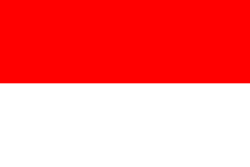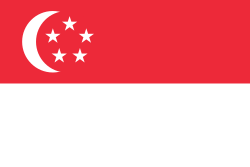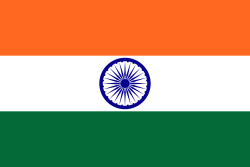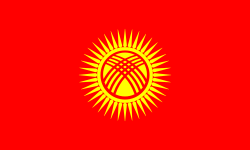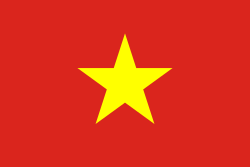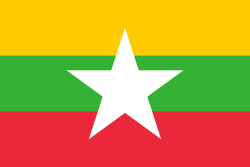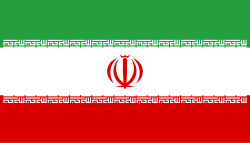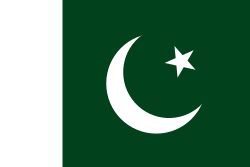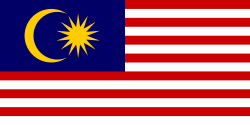Asienmesterskaberne i atletik
| Arrangør | Asiatiske atletikforbund |
|---|---|
| Grundlagt | 1973 |
| Region | Asien (Asiatiske atletikforbund) |
| Mest succesfulde hold | |
| Flest guldmedaljer | |
| Hjemmeside | www.athleticsasia.org |
Asienmesterskaberne i atletik er de asiatiske mesterskaber i atletik. Stævnet arrangeres af Det asiatiske atletikforbund siden oprettelsen i 1973. Siden 1996 har mesterskaberne været afviklet fast hvert andet år og siden 2003 på samme år som VM i atletik bliver afviklet.
Mesterskaber
- turneringer erklæret uofficielt ifølge IAAF.
- Aflyst
| Udgave | År | Værtsby | Værtsland | Datoer | Stadion | Discipliner | Nationer | Atleter | Flest medaljer |
|---|---|---|---|---|---|---|---|---|---|
| 1 | 1973 | Marikina | 18.–23. november | Rodriguez Sports Center | 37 | ||||
| 2 | 1975 | Seoul | 9.–14. juni | Dongdaemun Stadium | 39 | ||||
| - | 1977 | Aflyst grundet politiske kontroverser | |||||||
| 3 | 1979 | Tokyo | 31. maj – 3. juni | National Stadium | 38 | ||||
| 4 | 1981 | Tokyo | 5.–7. juni | National Stadium | 37 | ||||
| 5 | 1983 | Kuwait City | 3.–9. november | Kuwait National Stadium | 38 | ||||
| 6 | 1985 | Jakarta | 25.–29. september | Gelora Senayan Stadium | 42 | ||||
| 7 | 1987 | Singapore | 22.–26. juli | National Stadium | 40 | ||||
| 8 | 1989 | New Delhi | 14.–19. november | Jawaharlal Nehru Stadium | 40 | ||||
| 9 | 1991 | Kuala Lumpur | 19.–23. oktober | Stadium Merdeka | 40 | ||||
| 10 | 1993 | Manila | 30. november – 4. december | Rizal Memorial Stadium | 41 | ||||
| 11 | 1995 | Jakarta | 20.–24. september | Gelora Senayan Stadium | 41 | ||||
| 12 | 1998 | Fukuoka | 19–22 July | Hakatanomori Athletic Stadium | 43 | ||||
| 13 | 2000 | Jakarta | 28.–31. august | Gelora Senayan Stadium | 43 | 37 | 441 | ||
| 14 | 2002 | Colombo | 9.–12. august | Sugathadasa Stadium | 43 | ||||
| 15 | 2003 | Manila | 20.–23. september | Rizal Memorial Stadium | 43 | ||||
| 16 | 2005 | Incheon | 1.–4. september | Incheon Munhak Stadium | 43 | 35 | 536 | ||
| 17 | 2007 | Amman | 25.–29. juli | Amman International Stadium | 44 | 34 | |||
| 18 | 2009 | Guangzhou | 10.–14. november | Guangdong Olympic Stadium | 44 | 37 | 505 | ||
| 19 | 2011 | Kobe | 7.–10. juli | Kobe Universiade Memorial Stadium | 42 | 40 | 464 | ||
| 20 | 2013 | Pune | 3.–7. juli | Shree Shiv Chhatrapati Sports Complex | 42 | 42 | 522 | ||
| 21 | 2015 | Wuhan | 3.–7. juni | Wuhan Sports Center Stadium | 42 | 40 | 497 | ||
| 22 | 2017 | Bhubaneswar | 5.–9. juli | Kalinga Stadium | 42 | 41 | 560 | ||
| 23 | 2019 | Doha | 21.–24. april | Khalifa International Stadium | 43 | 42 | 595 | ||
| - | 2021 | Hangzhou | 20.–23. maj | Hangzhou Olympic Sports Center | Aflyst grundet coronaviruspandemien | ||||
| 24 | 2023 | Pattaya | 12.–16. juli | National Stadium | |||||
| 25 | 2025 | Gumi | |||||||
| 26 | 2027 | Xiamen | |||||||
Medaljeoversigt
| Rank | Nation | Guld | Sølv | Bronze | Total |
|---|---|---|---|---|---|
| 1 | 317 | 219 | 120 | 656 | |
| 2 | 156 | 195 | 221 | 572 | |
| 3 | 88 | 108 | 131 | 327 | |
| 4 | 63 | 39 | 41 | 143 | |
| 5 | 34 | 36 | 45 | 115 | |
| 6 | 32 | 27 | 16 | 75 | |
| 7 | 28 | 21 | 12 | 61 | |
| 8 | 27 | 58 | 64 | 149 | |
| 9 | 25 | 30 | 26 | 81 | |
| 10 | 19 | 27 | 21 | 67 | |
| 11 | 19 | 18 | 21 | 58 | |
| 12 | 18 | 16 | 21 | 55 | |
| 13 | 17 | 40 | 62 | 119 | |
| 14 | 16 | 18 | 7 | 41 | |
| 15 | 13 | 11 | 18 | 42 | |
| 16 | 12 | 11 | 23 | 46 | |
| 17 | 8 | 4 | 6 | 18 | |
| 18 | 8 | 2 | 5 | 15 | |
| 19 | 6 | 16 | 26 | 48 | |
| 20 | 6 | 4 | 3 | 13 | |
| 21 | 5 | 9 | 9 | 23 | |
| 22 | 5 | 2 | 1 | 8 | |
| 23 | 3 | 2 | 6 | 11 | |
| 24 | 3 | 2 | 4 | 9 | |
| 25 | 3 | 1 | 4 | 8 | |
| 26 | 2 | 3 | 2 | 7 | |
| 27 | 1 | 9 | 9 | 19 | |
| 28 | 1 | 5 | 2 | 8 | |
| 29 | 1 | 2 | 4 | 7 | |
| 30 | 1 | 1 | 3 | 5 | |
| 31 | 1 | 1 | 1 | 3 | |
| 32 | 1 | 1 | 0 | 2 | |
| 33 | 0 | 8 | 5 | 13 | |
| 34 | 0 | 2 | 2 | 4 | |
| 35 | 0 | 1 | 0 | 1 | |
| 36 | 0 | 0 | 2 | 2 | |
| 0 | 0 | 2 | 2 | ||
| Total (37 nations) | 939 | 949 | 945 | 2833 | |
Referencer
Eksterne henvisninger
| ||||||||||||||||||||||||||||||||||||
Medier brugt på denne side
bendera Indonesia
Variant version of a flag of Japan, used between January 27, 1870 and August 13, 1999 (aspect ratio 7:10).
Flag of South Korea (1949-1984)
Det er let at give dette billede en kant
Flag of Iran. The tricolor flag was introduced in 1906, but after the Islamic Revolution of 1979 the Arabic words 'Allahu akbar' ('God is great'), written in the Kufic script of the Qur'an and repeated 22 times, were added to the red and green strips where they border the white central strip and in the middle is the emblem of Iran (which is a stylized Persian alphabet of the Arabic word Allah ("God")).
The official ISIRI standard (translation at FotW) gives two slightly different methods of construction for the flag: a compass-and-straightedge construction used for File:Flag of Iran (official).svg, and a "simplified" construction sheet with rational numbers used for this file.
The national flag of Kingdom of Thailand; there are total of 3 colours:
- Red represents the blood spilt to protect Thailand’s independence and often more simply described as representing the nation.
- White represents the religion of Buddhism, the predominant religion of the nation
- Blue represents the monarchy of the nation, which is recognised as the centre of Thai hearts.
Chinese Taipei Olympic Flag. According to the official website of Chinese Taipei Olympic Committee, Blue Sky(circle) & White Sun(triangles) above the Olympic rings is neither the National Emblem of the Republic of China, nor the Party Emblem of Kuomintang (KMT), but a design in between, where the triangles do not extend to the edge of the blue circle, as registered at International Olympic Committee in 1981 and digitally rendered in 2013. Besides, the blue outline of the five-petaled plum blossom is broader than the red one. Moreover, the CMYK code of the blue one and the Blue Sky & White Sun is "C100-M100-Y0-K0", and different from the Olympic rings (C100-M25-Y0-K0). Note that it's the only version recognized by IOC.

